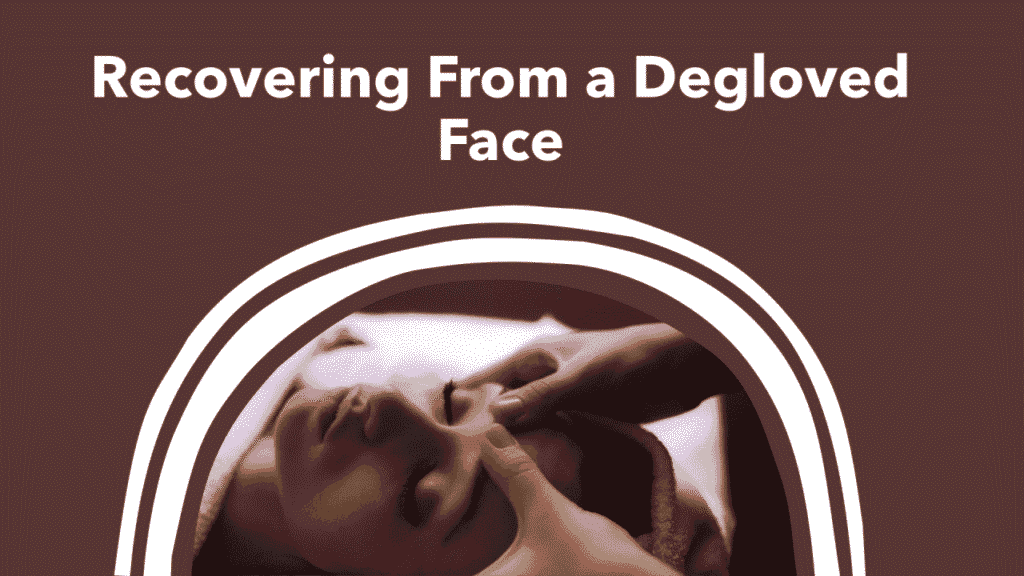Introduction
Imagine your face being injured so badly that the skin peels away from the tissue, muscles, or bones underneath. That’s what a degloved face injury is. It’s a very serious and painful kind of injury. When someone’s face is degloved, it means the skin and soft tissue of the face are pulled off due to a strong force. This can happen during a bad accident, a fall, or something sharp hitting the face. It sounds scary, and that’s because it is.
Doctors call this type of injury a “degloving injury.” When it occurs on the face, it can be even more dangerous due to the sensitivity and importance of the facial area. It can lead to big problems, like heavy bleeding, infection, and even long-term changes in how someone looks or moves their face.
Let’s explore what a degloved face is, how it happens, how doctors treat it, and what to expect during recovery. This guide will help you understand everything clearly and easily, no matter your age or background.
What Does a Degloved Face Mean?
A degloved face means that the outer skin and soft tissue have been torn away from the deeper layers of the face. The skin might be hanging like a flap or completely removed. This kind of injury shows the muscles, bones, or blood vessels underneath. It often happens suddenly and needs quick medical attention.
When the face is degloved, the blood vessels and tissues that help the skin stay alive get damaged. This makes it hard for the skin to survive without help. That’s why people with this injury often need surgery, skin grafts, or other complex treatments.
Read Aslo: WellHealth How to Build Muscle Tag Natural Guide to Strength & Wellness
What Causes a Degloved Face?
A degloved face doesn’t happen from small injuries. It usually comes from serious accidents. Car crashes are a common cause. Falls from high places, being hit by heavy machines, and certain sports injuries can also lead to it. Sometimes, animal attacks can cause the skin of the face to be pulled off. In rare cases, this kind of injury can happen in work-related accidents, especially in construction or factories.
In all these situations, a strong pulling force is the main reason. The force pulls the skin and soft parts away from the face’s deeper tissues.
How Doctors Spot a Degloved Face
When a person with a degloved face reaches the hospital, doctors act quickly. The injury is usually clear because the skin is pulled away or hanging off. But doctors still need to check how bad the damage is inside.
They often use tools like CT scans or MRIs. These machines help them see the bones, blood vessels, and deep tissues. This way, they can plan the right treatment and find other injuries that might be hidden.
Types of Degloving Injuries on the Face
There are two main types: open and closed. An open, degloved face means you can see the torn skin and the muscles or bones underneath. It’s very visible and usually bleeding.
A closed degloving injury on the face is harder to see. The skin is still in place, but it’s not connected to the layers underneath. These are rare on the face but can still happen. They may cause swelling, bruising, and hidden pockets of fluid.
Treatment Options for a Degloved Face
Treating a degloved face is not easy. Doctors usually start by stopping any bleeding. They clean the wound carefully to remove dirt and lower the chance of infection. If any skin is still hanging, doctors try to put it back in place. But sometimes, that skin is too damaged.
In those cases, they may use skin grafts. That means they take healthy skin from another part of the body and place it on the injured area. Sometimes, more than one surgery is needed. In very serious cases, parts of the face may not be saved. The goal is to make the face look and work as close to normal as possible.
Healing After a Degloved Face Injury
Healing takes time. The hospital stay might last days or even weeks. After leaving the hospital, people often need more help. This can include physical therapy to help move the face again and speech therapy if talking is hard.
Emotional healing is also important. A degloved face injury changes how someone looks. That can make people feel shy or sad. Talking to a counselor or therapist helps many people feel better inside.
Can a Degloved Face Be Prevented?
Some injuries can’t be avoided. But you can lower the risk. Wearing seatbelts, helmets, and safety gear helps. At work, always follow safety rules. In sports, use proper equipment. Protecting your head and face is key.
Being careful in high-risk places like construction sites or roads can also help. Even simple things like holding onto handrails when going down stairs make a big difference.
What Happens If You Don’t Treat a Degloved Face?
Leaving a degloved face untreated is dangerous. The skin can die, and infections may start. Some people may even get life-threatening infections. That’s why it’s so important to get medical help right away.
If treatment is delayed, more surgeries may be needed later. And the results might not be as good. The sooner doctors can help, the better the healing and the chances of saving the skin.
Possible Complications After a Degloved Face Injury
Complications are common with this injury. Infection is a big one. The wound is open, deep, and can let germs in easily. Dead skin tissue can also be a problem. Doctors may need to remove it.
Scars are also likely. Some people may need plastic surgery later to fix how the face looks. Nerve damage can also happen, which means you may not feel part of your face or have trouble moving it.
Living With a Degloved Face Injury
After healing, life changes. Some people need to adjust to how they look. They may feel nervous in public or avoid mirrors. That’s normal. Getting help from a therapist or support group can really help.
Family and friends also play a big part in recovery. Support from loved ones helps people feel less alone. Small steps, like returning to school or work slowly, make a big difference.
Real Stories and Hope for the Future
Many people who have had a degloved face injury go on to live happy lives. With good care, the face can heal. New skin can grow, and doctors can do amazing things with surgery today.
Sometimes, these people even become helpers themselves, sharing their stories to teach others and give them hope. Hearing how others made it through gives courage to those still healing.
FAQs About a Degloved Face
What is a degloved face?
A degloved face is when the skin and soft tissue of the face tear away from the tissue underneath due to trauma.
Is a degloved face deadly?
It can be. This injury can cause heavy bleeding and infection, making it very dangerous if not treated quickly.
How long does it take to heal from a degloved face?
Healing depends on how bad the injury is. It can take weeks or even months, along with therapy and surgeries.
Can doctors fix a degloved face completely?
Doctors can often fix it with skin grafts, surgeries, and therapy. But some people may have scars or other long-term effects.
Does a degloved face always need surgery?
Most of the time, yes. Skin reattachment or grafts are usually needed to fix the injury and help it heal well.
Can a degloved face happen again?
It’s rare, but possible if the person experiences another major trauma. Being careful can help lower the risk.
Final Thoughts
A degloved face is one of the most serious types of facial injuries. It can change a person’s life in many ways. But with the right care, support, and time, healing is possible. Doctors today can do amazing work with surgeries, and many people recover both inside and out.
If you or someone you know ever faces this kind of injury, don’t lose hope. With strong medical care, family support, and emotional healing, life can feel bright again. Just take it one step at a time, and remember, healing takes time but it is always possible.



